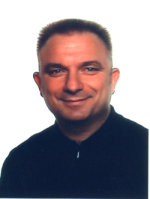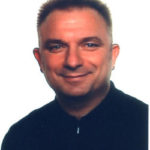Nice Premium: Can you explain what migraines and headaches are?
Michel Lantéri-Minet: We must start with headaches because it’s a generic term that means pain in the cephalic segment, that is, of the head. There are two major types of headaches: secondary headaches because they are symptomatic of something else, another illness. And primary headaches, which are illnesses in themselves. Among primary headaches, the main one is migraine. Migraine is characterized by particular signs and mechanisms.
NP: What are the symptoms of migraine?
ML-M: Migraine is characterized in its uncomplicated form by attacks. Patients do not have constant pain, only during attacks. Typically, they last between 4 and 72 hours. During the attack, the patient often experiences unilateral headache. This headache often has a pulsating quality. The patient feels as though their heart is beating in their head. The intensity is often quite severe. It is increased by physical exertion, such as going up or down stairs a bit quickly.
The other characteristic element of migraine, in addition to headache, includes other signs. Two of the main signs are digestive symptoms with nausea or even vomiting. There is sensory hyperesthesia. The patient is sensitive to all external stimuli, particularly visual stimuli (leading to photophobia) and auditory stimuli (leading to phonophobia). But this hypersensitivity can be much more diffuse, notably concerning smells, with something very characteristic of migraine called osmophobia. Smells are perceived as very unpleasant during the attack. This is for the uncomplicated form. It’s important to know that there is a complicated form—chronic migraine, where patients have pain at least 15 days a month. In these patients, there are no longer true attacks, but rather an impression of almost continuous headache pain.
NP: How many people are affected by migraines?
ML-M: Globally, if we consider the numbers in France, we can estimate that at least 12% of the general adult population suffers from episodic migraine. And 3% of the general adult population suffers from chronic migraine. In children, we somewhat lack data in France, but we estimate through other studies in Europe that at least 5% of the child population are migraine sufferers. The difference between children and adults, epidemiologically speaking, is that in children, both young boys and girls are equally affected by migraines. However, after puberty, there is a clear female predominance with three women for one man.
NP: What are the causes of these conditions?
ML-M: Migraine is characterized and defined by a repetition of attacks. What causes the repetition of attacks is a genetic predisposition. Migraine sufferers have, for genetic reasons, a slightly oversensitive brain that activates abnormally, especially under the effect of triggering factors. At that moment, the brain sends incorrect information to brain blood supply, particularly to the arteries of the meninges. These arteries are the site of two phenomena: inflammation and dilation. What hurts is this inflammation and dilation of the meningeal vessels. The mechanisms of the attack are somewhat vascular, but the origin of the disease is neurological with a genetic predisposition.
NP: Are there early signs of the condition?
ML-M: No, there are no precursor signs except that migraine-prone children, often from migraine-prone families, frequently have migraine equivalents in early childhood. These are symptoms that are not yet headaches but have the same value. Among major migraine equivalents, we find recurring digestive issues. Migraine sufferers are often individuals who, as children, had recurring digestive problems with vomiting and recurrent abdominal pain in early childhood. Another migraine equivalent is motion sickness. Children suffering from motion sickness often become migraine sufferers. But it is limited to that. When migraine is destined to appear, it manifests at different ages in life depending on the individual, and attacks emerge.
NP: Are some people more affected by these conditions than others?
ML-M: No. Firstly, the risk exists when one comes from a migraine-prone family because they often inherit these predisposition genes. Knowing that this predisposition does not guarantee occurrence since it’s a predisposition we call polygenic. Thus in families, since it depends on multiple genes, there might be sub-generations. You may have migraine-prone grandchildren with migraine-prone grandparents and parents who are unaffected. So, there’s this risk factor when someone is from a family with migraine history. The second element is being female. Women are more exposed to migraines than men. One could say these are the primary risk factors.
Then, there are triggers for attacks, but these do not cause the disease. They merely favor attacks. What is common among attack triggers is a change in state. This could be an emotional state change, stress, or conversely, great joy. It could be a physical state change, great fatigue, or conversely, a relaxation (weekend migraine, the first day of holidays). It could be a variation in sleep volume. Sleeping in can trigger a migraine, but sleep deprivation can also trigger a migraine. It can also be the effect of hormonal fluctuations in women, particularly the drop in estrogen preceding the menstruation period. It is often a time with migraine attacks. But it could also be external change factors like climatic, sensory variations, or stimulation (environments with too much noise, light) which can be enough for migraine sufferers to trigger attacks.
NP: How can these conditions be treated?
ML-M: Overall, there are three approaches in treatment. When possible, limit triggering factors. This is particularly worked on in children who sometimes haven’t perceived trigger factors. So these change factors, but this is quickly limited. There is a second part of treatment: treating attacks, applicable to all patients. This treatment is currently dominated by two pharmacological classes: anti-inflammatories, since there is vessel inflammation, and especially vasoconstrictors (any substance that constricts blood vessels). Among the vasoconstrictors, triptans dominate migraine attack treatment. Then, there is a third therapeutic approach: preventive treatment, given every day, even when patients do not have an attack to try to prevent attacks. This preventive treatment is generally reserved for only 25% of migraine sufferers. These are those with the most severe conditions because the attacks are too significant, because there is a deterioration in quality of life, or because there is a risk of drug influx or overuse of attack treatments. In this case, we offer the patient, at least for a period in their life, preventive treatment aimed at somewhat lowering the attack triggering threshold without unfortunately being able to completely cure.
NP: For how long do you propose this preventive treatment?
ML-M: On average, the patient is treated with a one-year cure. After that, we try to stop. Generally, in 80% or 85% of cases, you can stop the treatment.
NP: After taking this treatment, is there a definitive stop to migraines?
ML-M: It reduces the frequency while taking it. Once stopped, there is often a post-effect that can last several years. But we cannot assure the patient that migraines won’t reappear at a high frequency. In that case, we resume treatment. We currently don’t have the means to cure migraines.
NP: You are going to intervene within the framework of the European Congress on Migraines and Headaches. What will you discuss?
ML-M: We are participating with French teams in several areas. There is a public conference on Sunday where we will attempt to summarize current events in the field, knowing that we will primarily talk about two things: chronic migraine, the most severe form of migraine. It affects 3% of the population. We will also discuss a rarer primary headache, cluster headache, considered an orphan disease important to know about. The attacks in this disease are of shorter duration than migraine. They generally last no more than an hour. However, the intensity is extreme, and it can lead to suicides among patients suffering from this disease. It is very important that we talk about this disease, especially as we have entirely new therapeutic approaches in this disease, involving placing electrodes in the nervous system and permanently stimulating the system to try to control this disease. It is interesting for patients suffering from the most severe forms of cluster headache. It is also important for us because the functional neurosurgical approach of primary headaches is currently a topic of heavy study. We are quite advanced in France, particularly in Nice where we are somewhat of a leader in this field.




